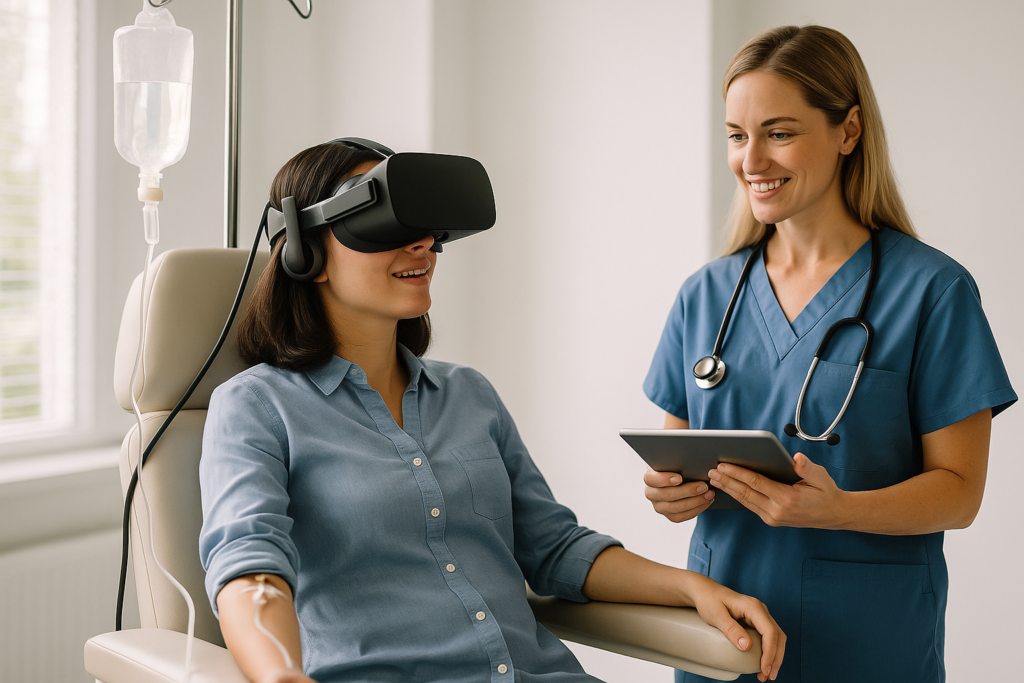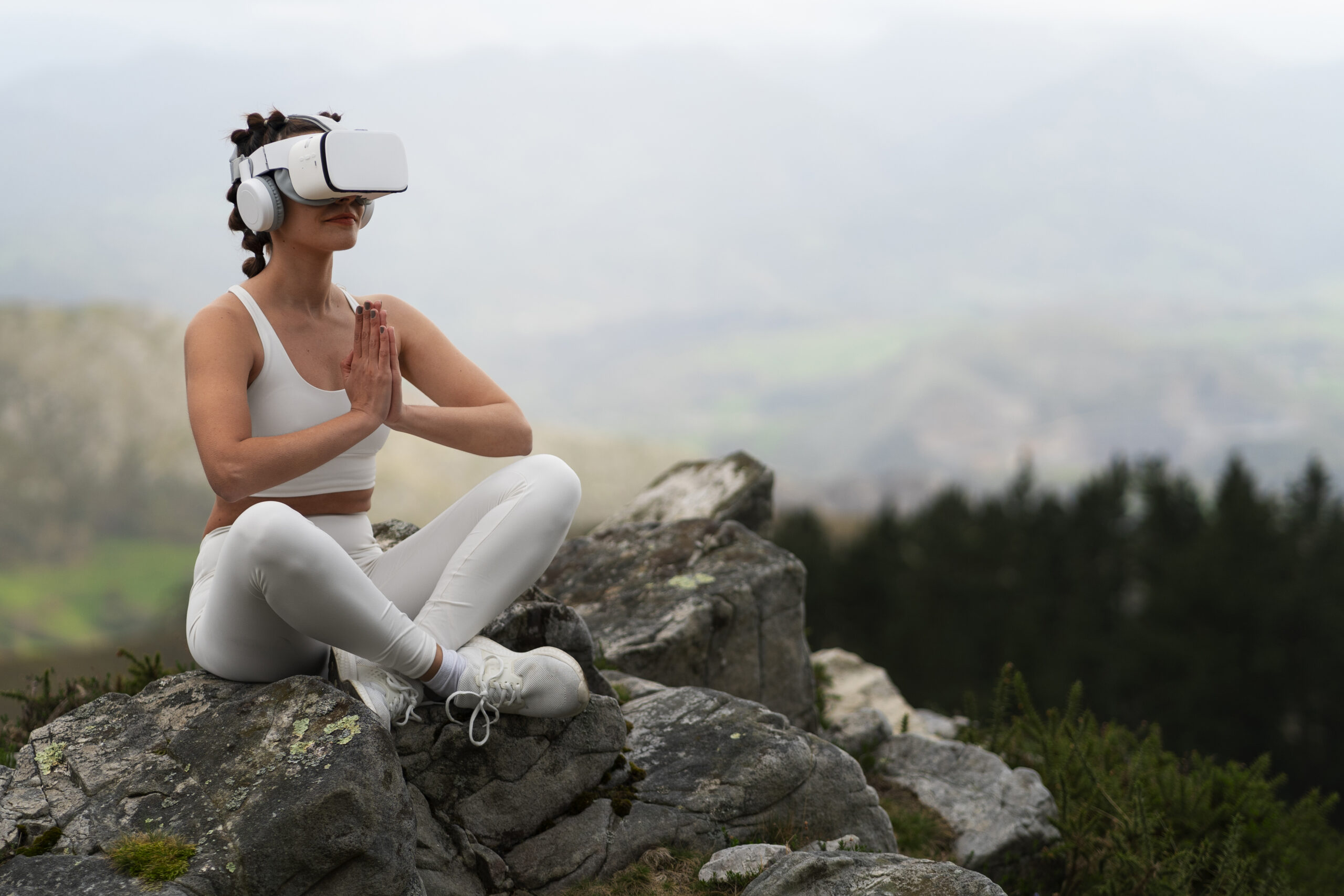In recent years, Virtual Reality (VR) has emerged as a valuable tool in healthcare, offering innovative approaches to rehabilitation, pain management, medical education, and mental health. Empirical studies published since 2020 provide solid evidence of VR’s growing effectiveness in both clinical and training settings.

Virtual reality introduces a renewed approach to care by highlighting emotional strength, inner calm, and healing potential.
Through immersive, uplifting experiences, it helps foster a more optimistic outlook in patients, turning moments of vulnerability into opportunities for emotional strength and recovery.

VR in Physical Rehabilitation
Virtual reality has been successfully implemented in neurological and musculoskeletal rehabilitation, with measurable improvements in patient outcomes:
Musculoskeletal Rehabilitation: In a study by Matamala-Gomez et al. (2021), over 80% of patients using VR reported greater adherence to exercise regimens, higher engagement, and pain reduction.
Stroke Recovery: A meta-analysis showed that patients using VR for motor rehabilitation post-stroke experienced significantly better outcomes in limb mobility and motor function than those receiving conventional therapy (Chen et al., 2021).
Parkinson’s Disease: A randomized controlled trial found that VR-based gait and balance training reduced fall risk by 30% and improved motor scores in Parkinson’s patients (Fang et al., 2021).
References:
- Fang, Q., et al. (2021). The effect of virtual reality training on balance and gait in Parkinson’s disease. Gait & Posture, 85, 11–17.
- Matamala-Gomez, M., et al. (2021). Immersive virtual reality and pain: A review of clinical effectiveness and mechanisms. Frontiers in Human Neuroscience. https://doi.org/10.3389/fnhum.2021.625872
- Chen, J., et al. (2021). Effectiveness of virtual reality in stroke rehabilitation: A meta-analysis. Neurorehabilitation and Neural Repair. https://doi.org/10.1177/15459683211022156

